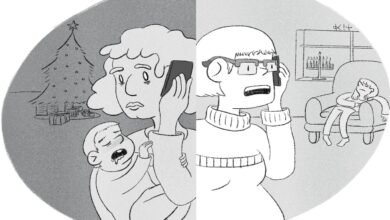The Politics That Derailed Congestion Pricing in New York

Congestion pricing is an unfortunate name. The term comes from market economics, but it sounds like you’re paying for a sinus infection—and this point was made by a supporter of congestion pricing in New York. The idea is to reduce car and truck traffic in a city’s busiest zone (Manhattan below Sixtieth Street, say) with a toll levied on vehicles entering that zone. Nobody likes a new toll, and congestion pricing doesn’t poll well in New York City, not even in Manhattan. It does worse in the suburbs.
In London, where it’s called congestion charging, the system was initially unpopular and a heavy political lift. But it has been in place for twenty-one years and, by any metric, has been a great success, thanks in part to constant tweaking. Traffic is lighter and safer in the central city, air pollution has been reduced. Meanwhile, the portion of the toll revenue directed to public transit has helped put the Underground and the vast London bus network in very good nick, indeed. Other cities—Singapore, Stockholm, Milan—each have their own successful versions of congestion pricing, geared to local conditions.
New York, after decades of debate and preparation, was poised to become, this month, the first American city to launch a congestion-pricing system. Several hundred million dollars have already been spent on developing infrastructure and erecting equipment, including overhead gantries, at more than a hundred toll-reading sites below Sixtieth Street. The system was scheduled to go live on June 30th.
In New York City’s peculiar power-sharing arrangement with Albany, Governor Kathy Hochul has unrivalled power over the city’s enormous transit network of subways, buses, bridges, tunnels, and commuter rail, including Metro-North and the Long Island Rail Road. The board of the Metropolitan Transportation Authority, which oversees all of it—moving more than six million people a day in fourteen counties in New York and Connecticut—and which also built the new congestion-pricing infrastructure, is largely controlled by the governor.
Hochul became, in office, an ardent fan of congestion pricing. “Anybody sick and tired of gridlock in New York City?” she asked a crowd at a rally in Union Square in December, 2023. “Anybody think we deserve better transit, especially those who live and work here?” Yes. “Anyone think that people with disabilities deserve to have more accessibility when they travel through this city?” Hell, yes. “Anybody want cleaner air for our kids and for future generations?” The crowd was for all of it. “Well then you love congestion pricing, right?”
On June 5th, Hochul, with almost no heads-up to anyone, released a video reversing her stance. “I have directed the M.T.A. to indefinitely pause the program,” she said. The reasons she gave were broadly economic. “Inflation is still cutting into New Yorkers’ hard-earned wages.” The fifteen-dollar daily automobile toll could break a middle-class family’s budget. New York’s economic recovery from the pandemic is incomplete, and the state legislation that created congestion pricing was passed in 2019, back when the city was flush. The subways are still not full, commercial vacancies are still high, and many workers are still remote. With congestion pricing, those people might never come back.
Was Hochul unaware that, according to the M.T.A., almost ninety per cent of workers in the central business district of Manhattan take mass transit? She is right, the subways are not back to pre-pandemic ridership, but car traffic into the city is above its pre-pandemic levels, employment in the city is at an all-time high, and the idea of congestion pricing is, and always has been, to coax people out of their cars and onto public transit. The Governor knows all this, of course—her arguments for congestion pricing over many months made the same points. But suddenly she seemed concerned only about the small percentage of commuters who drive into Manhattan.
The ready explanation for her abrupt reversal is party-political calculation. The narrow majority that the Republicans hold in the House of Representatives was made possible, in part, by several upset victories in the 2022 midterms in traditionally Democratic districts on Long Island and in the lower Hudson Valley. Nancy Pelosi publicly blamed Hochul for those losses, and Hakeem Jeffries, the Democratic Minority Leader, from Brooklyn, has shown a keen interest in regaining those seats. (If Democrats do retake the House, Jeffries will likely be the next Speaker.) Congestion pricing polls badly, of course, in the commuter suburbs in question. But, in the recent special election to fill the House seat vacated by George Santos, it seemed to be a non-issue. Tom Suozzi, a Democrat, won by eight points.
The opponents of New York’s congestion-pricing plan, all pleased to see it shelved, are an odd mix. They include the Trucking Association of New York, which filed a federal lawsuit against the M.T.A. to stop it, and New Jersey Governor Phil Murphy, a Democrat, who also filed a federal lawsuit, objecting to the plan on, among other things, constitutional grounds—New Jersey residents would be taxed by New York but see no benefit—claiming it was discriminatory and violated the commerce clause by unduly burdening interstate commerce. (Somehow, the tolls New Yorkers pay to drive the Jersey Turnpike are different.) The plan offered discounts and exemptions to low-income drivers and people with disabilities, and a scramble to create more exemptions included both the groups that one might expect, such as the police unions, who do not think their members should be asked to pay the new toll to get to work (then park on the nearest sidewalk), and others that are perhaps more surprising, such as the United Federation of Teachers, the city’s largest teachers’ union, which argued that its members are “essential”—and filed a federal lawsuit.
Some Democratic officeholders—Jeffries, Senator Kirsten Gillibrand, Mayor Eric Adams—have supported Hochul’s reversal, though quietly, perhaps making the same basic political calculation but seemingly not eager to associate themselves with her unconvincing volte-face at the last possible moment. Some longtime supporters of congestion pricing— legislators, transit advocates, environmentalists, good-government types, even a few M.T.A. board members—are searching for a way to challenge Hochul’s authority to stop the program, or hoping that the pause proves temporary, perhaps to be lifted after the elections in November.
But this moment feels like a pivot, a fateful flinch, for the city. Traffic in midtown barely moves for large parts of the day—and the air is often filthy with exhaust, the noise non-stop. There have been too many cars and trucks in New York for many decades, but the problem is worse now, and the congestion-pricing cavalry is not coming to the rescue. The economic cost of traffic congestion, leaving aside its impact on the city’s quality of life, is estimated to be twenty billion dollars a year. At the same time, the real transportation lifeblood of the city—the subways, the buses, the commuter trains—is being sapped by underinvestment. The toll revenue from congestion pricing was meant to provide the M.T.A. with fifteen billion dollars—enough to stop the ruinous deferring of subway maintenance, fund construction of the Second Avenue subway line into East Harlem, replace outdated train cars, buy electric buses, modernize decrepit signal systems that date back to Prohibition, and renovate more stations to make them accessible to those with disabilities. Now none of this is in view. Indeed, $3.4 billion of federal funding for the Second Avenue subway extension is at risk. In his first public comments after Hochul’s announcement, the M.T.A.’s rumpled chief executive, Janno Lieber, said that, after the blow to its capital budget, the agency would now need to concentrate on “basic stuff to make sure the system doesn’t fall apart.” With the summer’s first “heat dome” settling over the region, with train delays cascading, it has to be hoped the agency can manage that bare minimum. ♦




